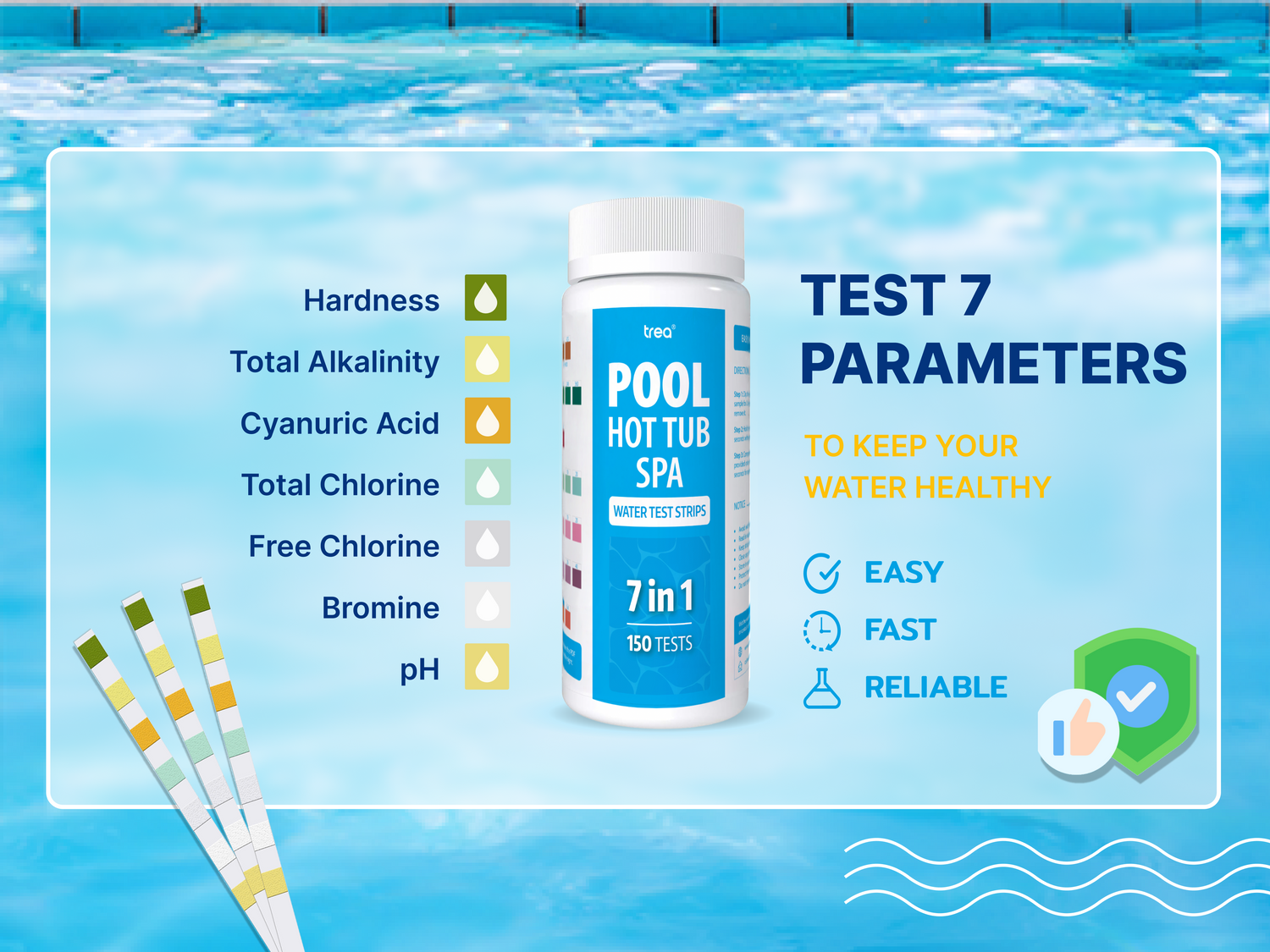Trea 17-in-1 Water Testing Resources

Trea 16 Parameters Color chart
Trea 16 Parameters Color chart
Trea 17-in-1 Water Test Kit User Guide
Trea 17-in-1 Water Test Kit User Guide
EPA Standards Reference Sheet
EPA Standards Reference Sheet
Hydrocrystal Water Test Kit Record Chart
Hydrocrystal Water Test Kit Record Chart
Trea 7-in-1 Pool, Hot Tub & SPA Water Testing Resources

Trea 7 In 1 Pool, Hot Tub and SPA Water Test Strips Color chart
Trea 7 In 1 Pool, Hot Tub and SPA Water Test Strips Color chart
Trea 7-in-1 Pool Water Test User Guide
Trea 7-in-1 Pool Water Test User Guide
Trea Instant Test Swabs for Lead

Why should I test my home for lead?
Why should I test my home for lead?
If you have children, lead in your home can cause serious long-term health and behavior problems, especially for those under 6 years old. Lead is found in paint, toys, dinnerware and more, which can enter children's bodies through their mouths.
Consider testing for lead if:
- Your house was built before 1978.
- Your house is near a freeway or busy road where leaded gasoline may have polluted the soil.
It's especially important to test if:
- Your house has peeling or chipping paint.
- Your yard has bare soil where children play.
- You plan to repaint, remodel, or renovate.
- A child in the house has shown lead exposure in a blood test.
- Your house was built before 1950, as these homes often have lead-based paint.
Where should I test for lead?
Where should I test for lead?
The most important areas to test for lead are those areas where children spend a lot of time, such as bedrooms, playrooms, kitchens, and play-yards.
Some good places to test for lead-based paint are:
- Window frames
- Doors, door jambs, and thresholds
- Trim and siding
- Kitchen cabinets
- Painted children's furniture and toys
- Baseboards
Frequently Asked Questions
Should I have my drinking water tested?
Should I have my drinking water tested?
The decision to test your water depends on various factors, including your and your family's health. Signs such as taste, color, odor, and staining of clothes or fixtures may indicate water quality issues. Considerations include the proximity of your water well to septic systems and the composition of your home's plumbing materials. This fact sheet offers information to help you determine whether testing your water is necessary, along with suggested tests based on your situation.
- If you suspect lead in your household plumbing or water service lines, testing your water is essential. Most water systems conduct lead tests as part of routine monitoring, providing a system-wide perspective that may not reflect conditions at individual faucets. Testing your home's drinking water is necessary to determine if unsafe lead levels are present. NSF International-certified faucet or pitcher filters can effectively remove lead from drinking water.
- If considering a home water treatment unit, test your water to identify contaminants and make informed decisions before contacting dealers.
Reference: https://www.epa.gov/sites/default/files/2015-11/documents
How often should I test my drinking water?
How often should I test my drinking water?
It is recommended to test your water annually for total coliform bacteria, nitrates, total dissolved solids, and pH levels. This is especially crucial if you have a new well or if there have been replacements or repairs to pipes, pumps, or the well casing.
Reference: https://www.epa.gov/sites/default/files/2015-11/documents
Identifying reasons to test your drinking water
Identifying reasons to test your drinking water
- Recurring gastro-intestinal illness: Coliform bacteria
- Household plumbing or service lines that contain lead: pH, lead, copper
- Radon in indoor air or region is radon rich: Radon
- Corrosion of pipes, plumbing: Corrosion, pH, lead
- Nearby areas of intensive agriculture: Nitrate, nitrite, pesticides, coliform bacteria
- Coal or other mining operations nearby: Metals, pH, corrosion
- Gas drilling operations nearby: Chloride, sodium, barium, strontium
- Dump, junkyard, landfill, factory, gas station or dry-cleaning operation nearby: Volatile organic compounds, total dissolved solids, pH, sulfate, chloride, metals
- Odor of gasoline or fuel oil, and near gas station or buried fuel tanks: Volatile organic compounds
- Objectionable taste or smell: Hydrogen sulfide, corrosion, metals
- Stained plumbing fixtures, laundry: Iron, copper, manganese
- Salty taste and seawater, or a heavily salted roadway nearby: Chloride, total dissolved solids, sodium
- Scaly residues, soaps don’t lather: Hardness
- Rapid wear of water treatment equipment: pH, corrosion
- Water softener needed to treat hardness: Manganese, iron
- Water appears cloudy, frothy, or colored: Color, detergents
Reference: https://www.epa.gov/privatewells/protect-your-homes-water




